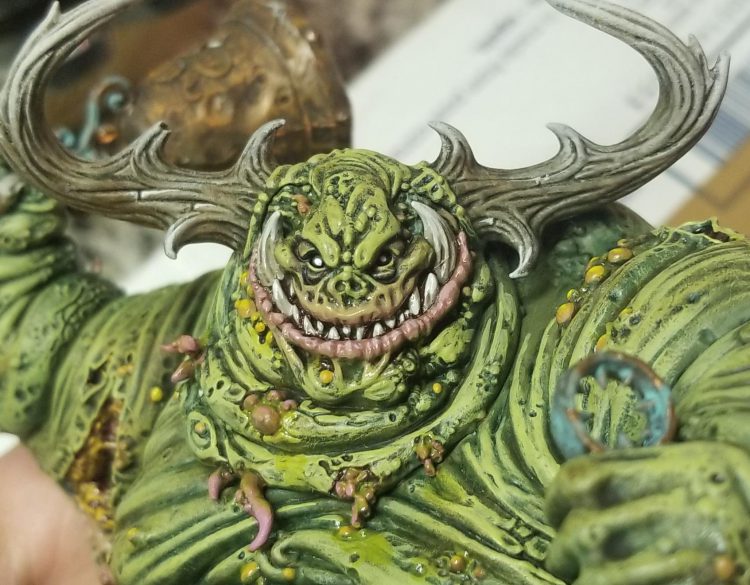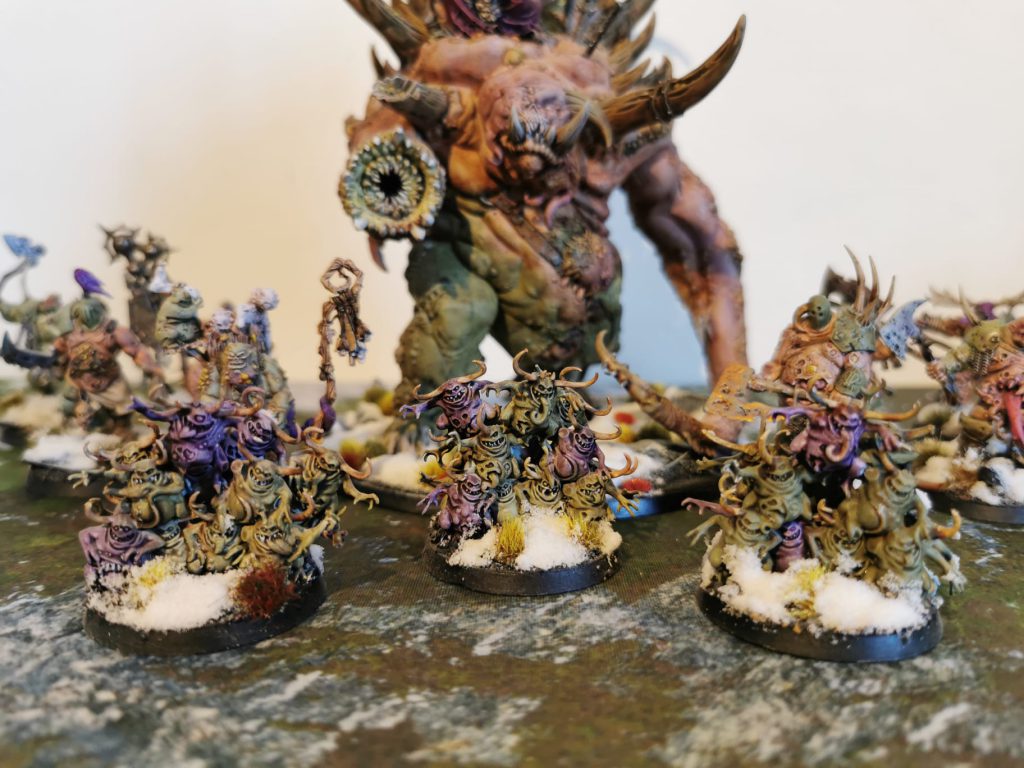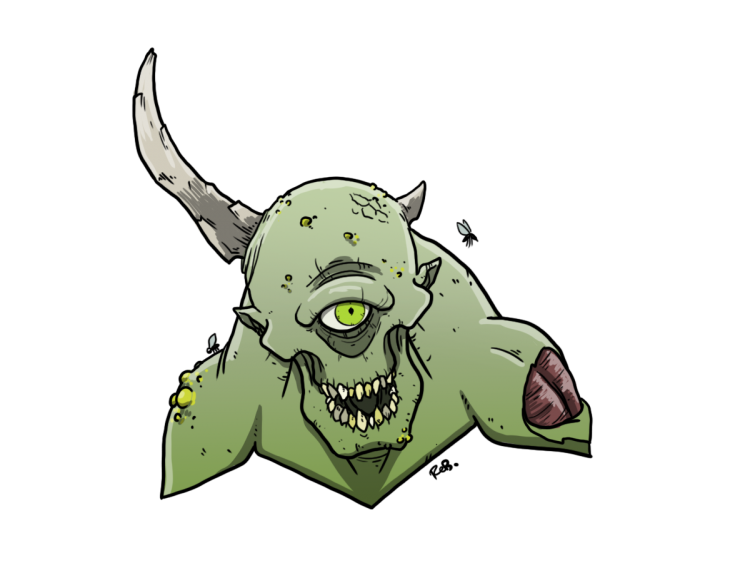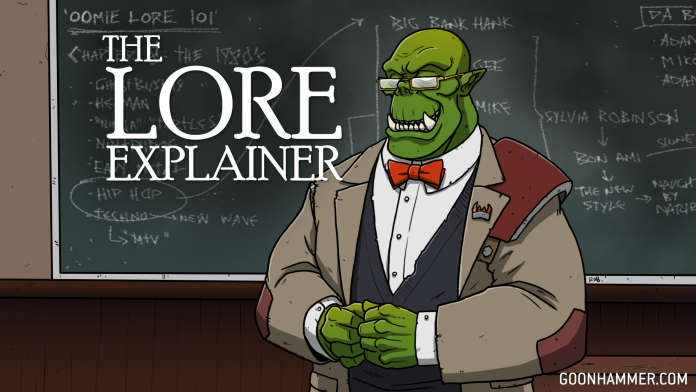You remember when all of this was rolling vineyard for miles. Oh, the wine! People travelled realms to trade. Myth has it that Allarielle, the goddess of life herself, planted the first grapes here, and then placed it under the stewardship of your ancestors. Yours was a proud lineage of esteemed vintners. But now the vine has withered, and your offspring along with it.
Only stinking quagmire remains now. Spindly shoots clamber from the sludge and limp along their supports without vigor. Haggard and decrepit sons, little more than bloated-bellies swaying on twiggy legs, wrestle every grape from unyielding soil. This whole county is but a wretched shadow of what it was. The hearts of its citizens failing as readily as the crops.
Few remain here now. Many left these lands while they could. Others sought easier, more permanent ways out of the despair that life has become. Those who linger, or what is left of those who linger, shuffle along the roadsides wheezing, hacking and spluttering. No one comes here anymore. No one seeks your wine. And why would they? It has become fetid and undrinkable; more rancid with every cycling harvest.
The Laird is your only enduring customer, demanding more and more every month.
Your cart’s wheels slide about in the mud, loaded with barrels, warped and shriveled by the corrupted fermentation inside. You dare not taste it. Long gone are the days when you would dip a goblet into the first barrel of a batch and raise it to Allarielle. These days you are only too glad to see it off your land.
![]() You knock at the door of the great hall. Once, this place reverberated with music and laughter. You remember it. But now, instead of music there is only the Laird’s coughing and retching. There is laughter still, but no longer the full-bodied good-natured laughter of friends celebrating a bountiful harvest. Instead, echoing in solitude, comes the maniacal giggling of a rotting mind, collapsing in on itself, day and night. And a voice calling out for more wine.
You knock at the door of the great hall. Once, this place reverberated with music and laughter. You remember it. But now, instead of music there is only the Laird’s coughing and retching. There is laughter still, but no longer the full-bodied good-natured laughter of friends celebrating a bountiful harvest. Instead, echoing in solitude, comes the maniacal giggling of a rotting mind, collapsing in on itself, day and night. And a voice calling out for more wine.
When you hammer upon it, there is not enough firm wood left of the sodden door to make a sound. Still, he knows you are there. There are no guards or courtiers, it is the Laird himself who rushes to meet you. His flesh seems to hang from his bones and pustules weep and ooze all over his body. The few strands of hair that remain to him cling to his sweat-caked forehead.
He slips a moist coin into your palm and starts to greedily paw at the barrels. His eyes are dead and joyless, but his mouth is stretched into a toothless grin. He hammers the tap into one of the barrels and begins to pour the dark red sludge into a goblet. He drains it and laughs.
He fills it again and offers it to you.
“It is tainted”, you object.
“Only problem is, it t’aint enough,” he laughs.
Somehow the cup is in your hands. Its foul odor offends your senses and turns your stomach, yet, somehow, you want to drink it of it. You know all this misery will be over if you did. But you can’t. To do so is to give into corruption.
The Laird leans in closer and the stench of putrefying meat envelopes you. His flesh is so loose it could slide off his skeleton at any moment, there is no muscle or fat beneath it, only ooze.
“You cannot make wine without decomposition,” he grins. “Ferment, my old friend.” He hisses again in your ear, “ferment.”
Despair floods your soul in waves and you put the cup to your lips.

Revellers in Rot and Ruin
Did you ever prod at a maggoty rat carcass with a stick when you were a kid? Or do you have an elderly neighbour who takes great pleasure in cataloguing to you every last thing that is going wrong with their body? Humans have a fascination with decay and disease.
All across the mortal realms there can be found individuals for whom this fascination has turned into obsession; those who pursue disease and decay wherever it can be found, and introduce it wherever it is absent.
There is great diversity among such festering fanatics.
Clans of swamp-dwelling virologists, once determined to cure disease, now obsessed with spreading it; exiled from the Cities of Sigmar due to their unnatural experiments done in devotion to Lord Leech. Mighty knights, marching to war in the service of The Lady of Cankerwall find billions of allies in the form of innumerable microbes, maggots and flies. Despairing, drought-stricken farmers pray to the Rainfather and receive his pestilent deluge and come to the realization that it is better to cultivate disease than crops. Fanatical devotees of the Great Horned Rat brew new plagues to unleash upon those not made in his murine image.
But behind all of this there is only one master of disease; one Plague Father, one Lord of Flies. He doesn’t care who takes the credit, or by what name people call him, so long as his generous gifts are spread far and wide within the realms: Nurgle.
Nurgle is the god of disease, decay and despair. It is with these resources that he is confident of winning the deadly, eternal Great Game, which he plays with his brothers, Khorne, Slaanesh and Tzeench. He is certain of his eventual victory, for all things must eventually decline and decay.
It is also worth saying here that whoever his followers are, from the mightiest warrior to the humblest farmer, Nurgle loves them deeply and with great pride. He is a family man. They call him Grandfather, or Papa. Other gods might look at their worshipers with distain, using them as mere pawns for their own designs, but Nurgle wants nothing more than to shower them with his gifts. Like a father locked in his shed, lovingly building a dolls house for his beloved child, Nurgle spends his time working away at his cauldron, excitedly brewing up new diseases and poxes to gift to his faithful.
Nurgle looks upon the mortal realms as a place teeming with life, ripe for his blessed corruption. The soaring prosperity of the Age of Myth made life run rampant and completely out of control. Balance needed restoring and Nurgle knew he was the one with the means, through his many gifts, to bring some kind of order to the chaos of unchecked life.
Nurgle, more than any other god, including Sigmar’s pantheon, is the true god of order. Whilst the other gods pursue their own agendas, deceive each other, and give into their own foibles, Nurgle strictly adheres to the orderly progression of the Wheel of Corruption. He is a methodical scientist, cataloguing and counting every new malady. This is why he hates his brother Tzeench, god of change for change’s sake, more than anyone else.
Nowhere in the Mortal Realms exemplifies the chaos of unchecked growth more than Ghyran, the realm of life. It was here that Nurgle’s ambitions were most virulently unleashed during the Age of Chaos. It was here that Nurgle would see his Garden encroach into the Mortal Realms most fully.

The Garden of Nurgle is the Plaguefather’s own little corner of the Realm of Chaos, and in its centre is Nurgle’s own manse and cauldron. This is a Garden, not a wild space. It is cultivated and planted, not permitted to run away of its own accord like the verdant spaces of Ghyran.
The bedlam of unfettered life and growth that Alarielle had set loose on Ghyran was all but brought under Nurgle’s orderly control during the Age of Chaos. Then the realmgates reopened, and Sigmar unleashed his Stormcast upon the forces of Chaos. Alarielle, who had retreated within herself once her realm was subdued, awoke from her sulking. The renewed might of Alarielle’s Sylvaneth and Sigmar’s Stormcast marched on Nurgle’s garden to reclaim the realm with renewed vigor. Nurgle’s stranglehold was loosened and his Garden of Nurgle was driven back by relentless life once more.
Initially, the ingratitude of mortals bothered Nurgle. Why were they rejecting his gifts? But he soon relented on his anger. Nurlge is a god of perspective and patience. He knows that all is waxing and waning and that the Great Wheel sometimes turns to ebbing, and sometimes to flowing. He became content to wait, knowing that his time would come once again.
Nurgle’s defeat in Ghyran has given him time to think things over. After a period of introspection he realized how selfish he had been in focusing on just the one realm. He has so much to offer and should bestow his gifts upon all the realms equally.
Bringing Nurgle’s story up to date, we now see his attention turning elsewhere. With great pride he has worked on a new disease to gift the world: the Shudderblight. Recipients fall into a wonderous lethargy which sees them simply give up on everything, often to the point of allowing themselves to waste away and die. As we enter the Dawnbringers period of the grand narrative of Age of Sigmar, we wait to find out whether this new malady will be enough to finally convince ungrateful mortals to embrace that vibrant, teeming space between life and death.
What does a Maggotkin Army look like?
Perhaps the most relevant question is, what does a Maggotkin of Nurgle army smell like? A teenager’s bedroom, last night’s vindaloo (post-digestive tract), bin juice on a hot summer’s day, all of the above. If the wind is in the right direction you will smell them before you see them.
At first, in the distance, you might spot one of the dreaded Harbingers of Decay, cloaked and on horseback, heralding that Nurgle’s eye has fallen upon you.
Eventually you see the rest of the army plodding along. Blubbery soldiers, picking at their open pustules and tripping over their own dragging intestines. The tolling of bells, screeching of pipes and incessant laughter and song; a carnival atmosphere.
You start to feel unwell long before they reach you. You find yourself breaking out in painful rashes, and spluttering your lungs out with hacking coughs. That’s without mentioning the diseases of the spirit that fill you with lethargy and despair, which only grows during the time it takes the Maggotkin to arrive – which is a long time, because they’re in no rush.

Then, all along your front ranks is the deep peeling of bells as the first wave of rot fly mounted Pusgoyle Blightlords flatten your comrades. Mighty Lords of Afflictions jab at the cowering troops beneath them with their fester pikes, as their fly mounts tear at their victims viciously, with mandibles and stings. Plague Drones also buzz about, tossing rotting Death’s Heads, which explode with noxious sludge, and pepper the front ranks with new maladies that get to work immediately, causing their victims to break out in buboes immediately, rotting like a timelapse of a decaying apple before your very eyes.
You barely have time to recover from the initial shock before you see the lumbering charge of Putrid Blightkings, bloated with unnatural strength and resilience. They feel no pain, are disgustingly resilient, and have no use for that organ you just skewered on the end of your sword. Accompanying that tide of blubber, rot and rusty blades, comes an assault of corrupted magic, riding on waves of arcane bile, flung by Rotbringer Sorcerers from the back ranks.
If you are particularly unlucky, you might even come head-to-head with one of Nurgle’s mightiest champions. Perhaps your death will be yet another notch that feeds the towering arrogance of Gutrot Spume, seeking to gain favour with Nurgle by hunting down the mightiest enemy he can find on the battlefield.
Or will it be one of the three Maggoth Lords, riding on their giant maggot monstrosities, that takes a personal interest in your death? Perhaps Morbidex Twiceborn’s insanely grinning face will be the last thing you see as he heals every wound nearly as fast as you can inflict it. Or maybe the sorcerous sack of maggots, Bloab Rotspawn, will envelop you in the swarm of biting flies that leak from his every orifice. Then again, it could be Orghotts Daemonspew that scatters you to every corner of the battlefield with his Rotaxes.
More terrifying still are the Glottkin. No other mortals are as highly esteemed and doted upon by Nurgle than these mutated triplets. Ghurk, the monstrous but ponderous. Otto, the murderous yet gregarious. Othrack, the sorcerous and cantankerous. The monster, the warrior and the wizard; carrying around the ashes of their parents and centuries of unresolved grief. Blood bound, always squabbling, but never apart.
Whilst the strength of Nurgle’s warriors should never be underestimated, the Maggotkin of Nurgle are about far more than just war. Their ranks are made up of more than just warriors.
Gardeners are just as important as warriors in a Maggotkin army. As the shambling ranks advance, you’ll notice Nurgle’s garden springing up in its wake with blooming Feculent Gnarlmaws springing up from the ground. Horticulous Slimux is the oldest of Nurgle’s daemons and oversees the cultivation of Nurgle’s garden as it manifests itself within the realms. He is assisted by the Lords of Plagues who charge through the Battlefields creating compost out of their victims to nourish the soil. Lords of Blights tend to the blossoming corpse orchards, and pick the thrice-ripened death heads, within which are the microbial seeds of new diseases to spread the garden to new places and people.
There are scientists too. Festus Leechlord conducts his unnatural experiments to develop his foul potions and spells. The Rotmire Creed, flung out of their home cities for dabbling in occult virology, find their home in the fold of likeminded disease bringers. Even the iconic Great Unclean Ones, such as Rotigus Rainfather, are known to be as intelligent as they are jolly, and boundlessly creative in the arts of disease-craft. It is the Great Unclean Ones that most reflect the likeness of Nurgle in all his generosity, good nature and unbridled power.
Observation being a key part of the scientific endeavour, we see daemons like Epidemeus watching over the battlefield and taking careful note of how the gifts of Nurgle are being distributed. Keeping track of all of the new diseases are the legions of Plaguebearers, endlessly counting to themselves, with their Poxbringer lieutenants keeping them in line.

Alongside these units, otherwise known as Tallybands, are heralds that reflect something of the dual natures at work in Nurgle. The Spoilpox Scriviners are deadly serious beings, committed to Nurgle’s sense of order and organization, demanding counts from those Plaguebearers under them as they scrawl out any new diseases they find, and catalogue their effects. Endlessly annoying the Scriveners are the Sloppity Bilepipers (and, yes, this is the best name Games Workshop have ever given a unit,) jesters inflicted with the plague of mirth. They reflect the jovial and good-natured side of their god; prancing about the ranks of daemons, singing such classics as “My Love is Like a Ripe, Ripe Fart” and “Early one Evening my Pustule Was Weeping.” The Bileipiers and their Jolly Gutpipes remind us that, whilst Nurgle is a god of strict order and philanthropic generosity, he is also a loving and jovial god.
This brings us on to the final two elements you’ll spot in a Maggotkin of Nurgle Amy, which remind us that the Maggotkin are just one big happy-scabby family. Firstly, the Beasts of Nurgle. Lolloping, slug-like creatures who, like overgrown, festering Labradors, just want to play and have fun. They get disappointed when whatever toy they’ve found among the enemy ranks stops wriggling and goes limp. And, of course, Nurglings! Scamping about and getting up to mischief. You know the kind of cheeky high jinks I’m talking about, playing little pranks, like using your guts as a skipping rope and playing hide and seek in your bowels. Who said despair has to be depressing?
On the Table
If you want a fuller account of the Maggotkin’s rules, you can check out the Goonhammer battletome review. What we’re looking at here is how the lore is translated into rules for your miniatures on the tabletop.

Firstly, your models look amazing! Each one tells a story. Why on earth does that Plaguebearer look so happy when there is a Nurgling literally chewing on his innards? That guy’s carrying a bunch of farming implements, what’s his story? Nurgle is also the easiest army to kitbash, so you can really go to town with creating your own stories in the way you build your models.
I also think the game mechanics in Nurgle’s rulebook are one of the best in terms of reflecting the personality and lore of the faction. You have a wheel of corruption that progresses throughout the game, and gives you different buffs each round. Some of these abilities let you really lean into them, such as Noxious Revulsion which stops enemy units from piling in closer to your troops, and can even help swing a game. It forces you to be mindful of where the wheel is and change how you play accordingly, making your playstyle fit into Nurgle’s sense of order.
Nurgle is also extremely resilient, and your pieces stay on the board for much longer. They don’t hit hard, but they can take a punch. Not only does this fit with the idea of the Maggotkin being blessed with the resilience needed to be vectors of all of these potent diseases, but it also forces you to play the long game. Nurgle is a patient god, he doesn’t need to secure swift and quick victories. He can wait for a city’s defenses to gradually dwindle. Likewise, in the game, you’re likely to be playing all the way to round 5, and often your victories are won by simply outlasting your opponent.
Finally, there’s the disease points. Every unit that gets too close to you, or every time you score an unmodified hit roll of 6, you inflict disease points on the enemy. Then, at the start of the battleshock phase, you roll a dice for every disease point, and on a 4+ that unit takes a mortal wound. What’s more, unless healed, the disease never goes away, and lingers in some form throughout the game. Heroes die who haven’t even seen combat all game. Units wipe out their Maggotkin opponents, and then suddenly half of them drop dead in the battleshock phase to disease.
This is such a great mechanic and reflects how, for Nurgle, it’s not all about the fighting. You can do battle with a Maggotkin Army and utterly destroy them, but as you parade through the streets of your hometown, with your neighbours and countryfolk cheering you on, you suddenly start coughing up blood and gunk. Before you pass out you realise that you have just brought Nurgle’s gifts into the very heart of your country.

Have any questions or feedback? Got a topic you want us to cover in The Lore Explainer? Drop us a note in the comments below or email us at contact@goonhammer.com.


